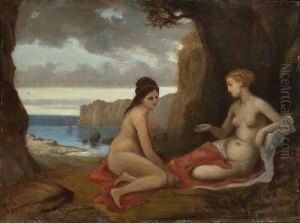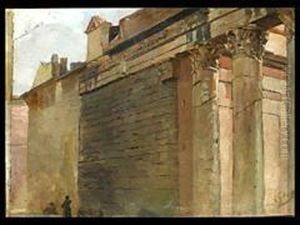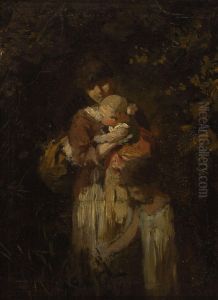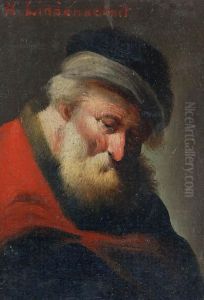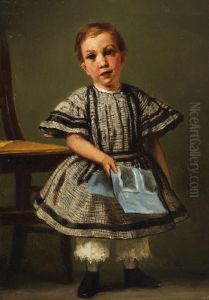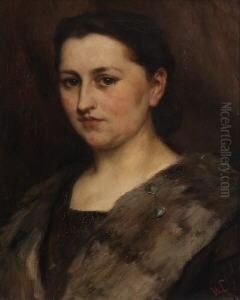Wilhelm Ii Lindenschmit Paintings
Wilhelm II Lindenschmit, also known as Wilhelm Lindenschmit the Younger, was a German painter born on June 27, 1829, in Munich. He came from a family with a strong artistic background; his father, Wilhelm Lindenschmit the Elder, was also a painter, and his uncle, Johann Georg Lindenschmit, was a lithographer. This environment naturally inclined him toward an artistic career, and he received his early training from his father.
Lindenschmit the Younger studied at the Munich Academy of Fine Arts, where he was influenced by the works of the Old Masters and the burgeoning Romantic movement. As he developed his style, he became known for his historical paintings, which often depicted scenes from German history with a romantic and nationalistic fervor. His works were characterized by their detailed realism, vibrant color palette, and the emotional intensity of the subjects.
In 1853, he became a professor at the Städelsches Kunstinstitut in Frankfurt, where he continued to work and teach. Throughout his career, Lindenschmit remained engaged with the academic art community and participated in various exhibitions. His paintings were well-received, and he was commissioned to create works for important public buildings, contributing to the visual culture of the time.
Lindenschmit’s contribution to German art was significant in the way he captured the spirit of his nation’s past. He was a contemporary to the movement known as the “Düsseldorf school of painting,” which was known for its detailed precision and historical subject matter. However, his work also displayed a distinct personal style and dramatic narrative quality.
Wilhelm II Lindenschmit died on March 5, 1895, in Munich. His legacy is preserved in the form of his paintings, which are housed in various museums and collections. His work continues to be studied for its representation of 19th-century historical painting and its influence on the German art scene of the time.
